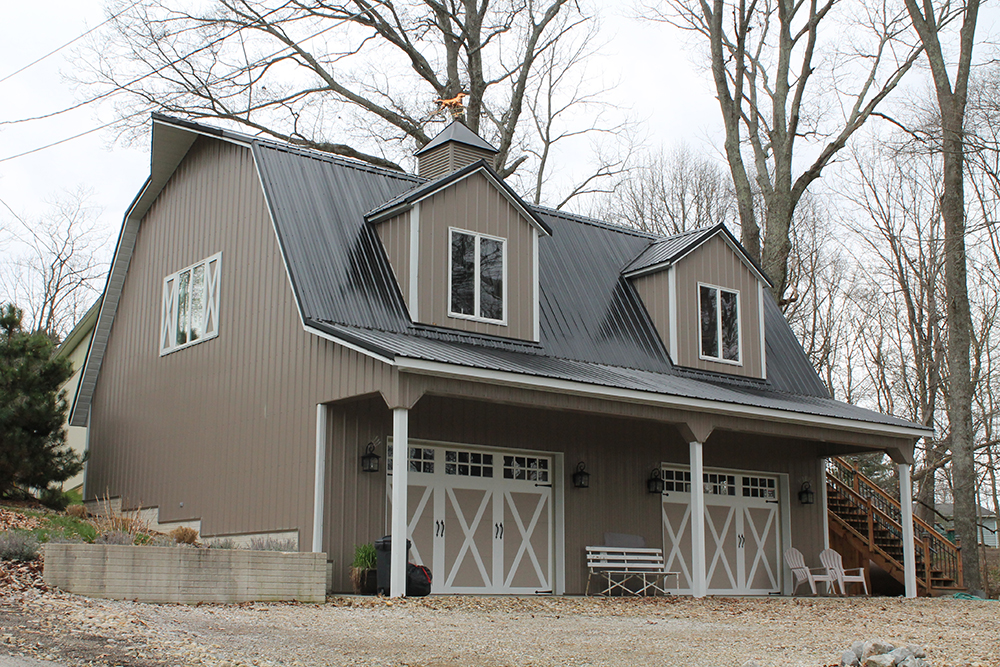Many homeowners ask this question when considering metal roofing versus asphalt shingles: Are metal roofs noisy when it rains? The short answer is not necessarily. The perception that metal roofing is loud most likely comes from standing in a barn or shed when it’s raining. This comes down the roofing installation methods, which differ from residential and commercial construction to agricultural construction. The truth is that high quality metal roofing that is properly installed shouldn’t be louder than traditional asphalt shingles.
With traditional roofing installation, plywood decking, insulation and underlayment are used to add protection and reduce noise. The plywood decking or sheathing layer is installed first. Next, the underlayment is added, serving as a moisture barrier. Finally, add insulation in the attic airspace below.
Without these elements of a traditionally installed roof, the metal panels are installed directly on the framing. This means that there’s no barrier to reduce noise transfer to the interior of the building. This is common in secondary structures such as barns, sheds and other agricultural structures.
Tips to Reduce Metal Roof Noise
If your metal roof was installed without plywood decking, underlayment and insulation, here are some tips to reduce metal roof noise:
1) Add Insulation – Insulation serves as an acoustic barrier and reduces noise transfer to the interior of your building. It also improves the energy efficiency of your building, helping to reduce overall energy costs.
2) Properly Fasten Roof Panels – Proper installation is crucial to reducing noise. Use proper fasteners and don’t over or under-tighten them. Refer to the product manual for correct fastener layouts and spacing.
3) Replace Your Roof – Consider replacing your roof and using traditional methods for residential and commercial roofing installation. Insulated metal panels are also a great option as they provide thermal, moisture and vapor barriers in a single component.
Why Choose Metal Roofing?
When installed with decking, underlayment and insulation, metal roofing isn’t any louder than traditional shingle roofing. Compared to shingle roofing, metal roofing offers superior longevity, durability and sustainability. Metal roofing offers a lifespan of 50 years or longer. It can also stand up to harsh weather conditions such as high winds and heavy snow loads. Metal panels are made from 25%-35% recycled materials and are virtually 100% recyclable at the end of their life.
To learn more about metal roofing, browse our panel profiles and contact your local sales representative today.


